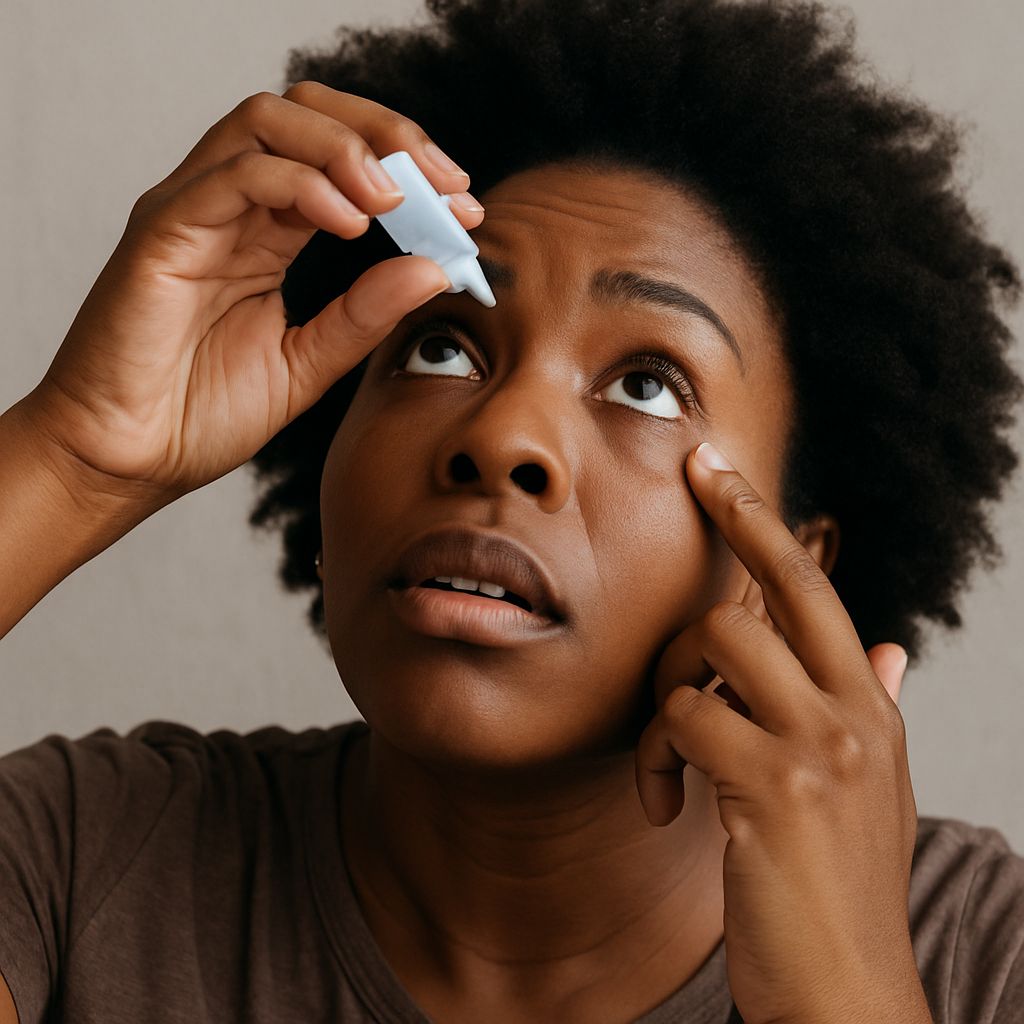Features
Sharon Enemuoh: The Dangers of One-Product-Cures-All Ocular Products

In recent times, the market, particularly social media platforms, has witnessed a surge in the promotion of so-called “miracle” ocular products—eye drops, herbal solutions, or ointments that claim to cure a range of conditions, from dry eyes to glaucoma, cataracts, retinopathies, and even infections. These products are often marketed with bold promises, appealing to patients who are desperate for relief. However, behind these grand claims lies a serious public health risk rooted in misinformation and the exploitation of vulnerable individuals.
The Problem with One-Product-Cures-All Claims
The human eye is a complex and delicate organ. Different eye conditions have distinct causes, mechanisms and treatment requirements. For instance, Dry Eye Syndrome stems from tear film instability or reduced tear production, conjunctivitis (pink eye) may be viral, bacterial, or allergic in origin, each requiring a different treatment, glaucoma is a progressive optic neuropathy often linked to elevated intraocular pressure, cataracts involve the clouding of the eye’s natural lens and age-related macular degeneration (AMD) affects the retina and central vision.
A single product cannot logically or medically address all these conditions. The idea is not only scientifically flawed but potentially harmful to the innocent persons who, out of desperation, fall for this gimmick
Hidden Side Effects of Using General Eye Products
There are several risks attached to using a one-size-fits-all ocular product. The first is delayed diagnosis and treatment. Believing that a product is curing the condition may lead patients to actually delay proper diagnosis and care. For example, glaucoma requires specific pressure-lowering medications or surgery. Using an ineffective product can allow irreversible vision loss to progress silently.
The second is toxicity and irritation. Many all-purpose eye drops are formulated without proper pH balance, preservatives or sterility controls. This can lead to eye irritation, chemical burns, allergic reactions or worsened inflammation. The third is antibiotic resistance. Products falsely claiming to treat infections may contain inadequate or unregulated amounts of antibiotics or herbal antibacterials. Inappropriate use can fuel microbial resistance, making future infections harder to treat.
The fourth is that these products mask symptoms. Some products contain vasoconstrictors or steroids that suppress redness or inflammation temporarily, giving a false sense of improvement. This masking effect can delay the detection of serious underlying issues like uveitis or corneal ulcers.
The final two side effects are systemic side effects and cross-communication and infection. Certain eye products, especially those unregulated, can contain corticosteroids or mydriatics without disclosure. These can lead to complications such as increased intraocular pressure, cataracts, or systemic absorption, causing high blood pressure or hormonal imbalance. Poorly packaged or unhygienically prepared eye products can introduce bacteria or fungi into the eye, resulting in corneal ulcers or even blindness.
Quackery Behind the Promotions
The supporters and promoters of these cure-all ocular products often fall into the category of healthcare quackery, offering unscientific remedies, sometimes without medical qualifications. Their methods include flooding social media with anecdotal “success” stories rather than peer-reviewed clinical evidence, claiming that conventional treatments (like surgery or prescription drops) are dangerous or ineffective, and they prey on people’s fear and financial limitations. They often misuse scientific jargon or cherry-pick research to validate false claims, and many of these products are not approved by national or international drug regulatory bodies like NAFDAC or the FDA.
Such practices not only endanger public eye health but also undermine trust in evidence-based medical practice. In many low-income or underserved communities, where access to qualified optometrists or ophthalmologists is limited, these products can do irreparable harm.
The Right Way Forward
Eye health must be treated with the same level of care and specificity as any other aspect of healthcare. As individuals seek professional advice and always consult a licensed eye care professional before using any ocular product. Avoid over-the-counter cure-alls, especially those lacking clear labelling, expiry dates or approved ingredients. Report suspicious products to health authorities when dubious products or unqualified sellers are found. Raise awareness by educating your community about the dangers of quack remedies and the importance of proper eye care.
No single eye drop or solution can treat the wide range of ocular diseases effectively and safely. Trusting such products is not only misguided but dangerous. Behind the glossy marketing of these so-called miracle cures lies a troubling combination of ignorance, deception, and risk. As eye care professionals and informed individuals, we must advocate for evidence-based care, challenge quackery, and protect vulnerable patients from preventable vision loss. Your eyes deserve proper care; don’t settle for shortcuts.





















